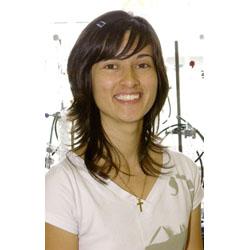Biomedical student bursts into nuclear science
Published on 25 July, 2003
Central Queensland University final year biomedical science student April Morton has just returned from an explosive winter school at the Australian Institute of Nuclear Science and Engineering (AINSE) near Sydney.
April got “up-close and personal’ with neutron scattering instruments on the nuclear research reactor HIFAR (High Flux Australian Reactor), as well as ion beam accelerators, gamma irradiation and geochronology facilities. She also toured other major facilities at the Australian Nuclear Science and Technology Organisation (ANSTO).
 Every year AINSE offers a scholarship to each of its member universities to enable a nominated student to attend the annual winter school on applications of nuclear techniques in natural processes and sciences – archaeology, geology, physics, nuclear medicine and environmental science. April was chosen from Central Queensland University due to her GPA and interest in the project.
Every year AINSE offers a scholarship to each of its member universities to enable a nominated student to attend the annual winter school on applications of nuclear techniques in natural processes and sciences – archaeology, geology, physics, nuclear medicine and environmental science. April was chosen from Central Queensland University due to her GPA and interest in the project.
April said the winter school was an enlightening experience for her as she learnt about the numerous ways nuclear science impacted on her area of expertise, biomedical science – radiopharmaceuticals, radiotherapy, medical products sterilisation, waste treatment, food preservation, diagnostics, X-ray (CAT scans, bone fractures, etc.), PET imagining for malignant disease, etc.
“Topics covered at each winter school changes from year to year, depending upon what research is currently being conducted at AINSE/ANSTO. There is always something for everyone at the winter school ... it’s definitely worth it. It’s not just for physicists and mathematicians".
“One of the main things I learnt while at the winter school is that what you major in at University doesn’t have to restrict your employment options,” April explained.
“There are so many applications for biomedical science – it can open many doors”.
April will complete her biomedical science degree this year and hopes to work in medical research, specialising in microbial pathogenicity (how microbes can cause disease) and possible vaccine development.

